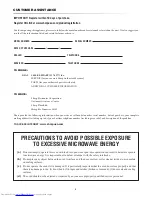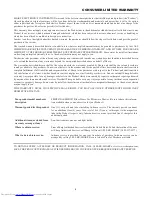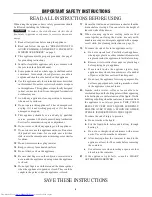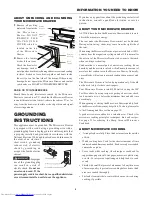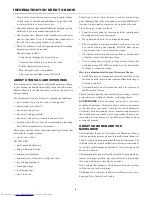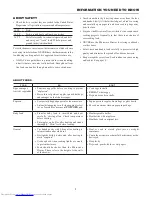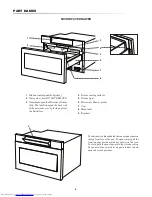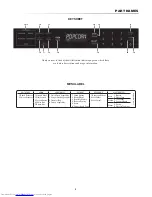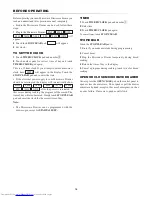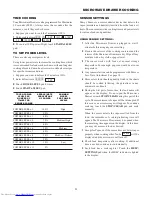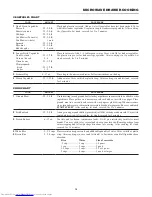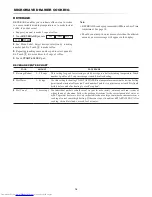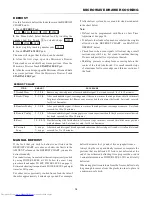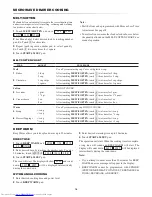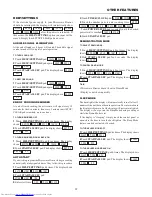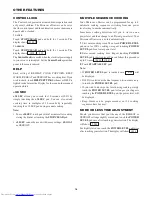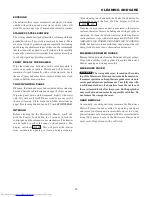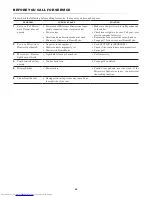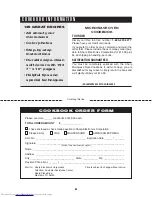
6
• Turn foods over once during microwaving to speed cooking
of such foods as chicken and hamburgers. Large items like
roasts must be turned over at least once.
• Rearrange foods such as meatballs halfway through cooking
both from top to bottom and from right to left.
• Add standing time. Remove food from Microwave Drawer
and stir, if possible. Cover for standing time which allows
the food to finish cooking without overcooking.
• Check for doneness. Look for signs indicating that cooking
temperatures have been reached.
Doneness signs include:
- Food steams throughout, not just at edge.
- Center bottom of dish is very hot to the touch.
- Poultry thigh joints move easily.
- Meat and poultry show no pinkness.
- Fish is opaque and flakes easily with a fork.
abOut utensils anD COverings
It is not necessary to buy all new cookware. Many pieces already
in your kitchen can be used successfully in your new Microwave
Drawer. Make sure the utensil does not touch the interior walls
during cooking.
Use these utensils for safe microwave cooking and reheating:
• glass ceramic (Pyroceram
®
), such as Corningware
®
.
• heat-resistant glass (Pyrex
®
)
• microwave-safe plastics
• microwave-safe paper plates
• microwave-safe pottery, stoneware and porcelain
• browning dish (Do not exceed recommended preheating
time. Follow manufacturer’s directions.)
These items can be used for short time reheating of foods that
have little fat or sugar in them:
• wood, straw, wicker
DO NOT USE
• metal pans and bakeware
• dishes with metallic trim
• non-heat-resistant glass
• non-microwave-safe plastics (margarine tubs)
• recycled paper products
• brown paper bags
• food storage bags
• metal twist-ties
Should you wish to check if a dish is safe for microwaving,
place the empty dish in the oven and microwave on HIGH for 30
seconds. A dish which becomes very hot should not be used.
The following coverings are ideal:
• Paper towels are good for covering foods for reheating and
absorbing fat while cooking bacon.
• Wax paper can be used for cooking and reheating.
• Plastic wrap that is specially marked for microwave use can
be used for cooking and reheating. DO NOT allow plastic
wrap to touch food. Vent so steam can escape.
• Lids that are microwave-safe are a good choice because heat
is kept near the food to hasten cooking.
• Oven cooking bags are good for large meats or foods that
need tenderizing. DO NOT use metal twist ties. Remember
to slit bag so steam can escape.
How to use aluminum foil in your Microwave Drawer:
• Small flat pieces of aluminum foil placed smoothly on the
food can be used to shield areas that are either defrosting or
cooking too quickly.
• Foil should not come closer than one inch to any surface of
the Microwave Drawer.
Should you have questions about utensils or coverings, check a
good microwave cookbook or follow recipe suggestions.
ACCESSORIES
There are many microwave accessories
available for purchase. Evaluate carefully before you purchase
so that they meet your needs. A microwave-safe thermometer
will assist you in determining correct doneness and assure you
that foods have been cooked to safe temperatures. Sharp is not
responsible for any damage to the Microwave Drawer when
accessories are used.
abOut CHilDren anD tHe
MiCrOWave
Children below the age of 7 should use the Microwave Drawer
with a supervising person very near to them. Between the ages of
7 and 12, the supervising person should be in the same room. The
child must be able to reach the Microwave Drawer comfortably.
At no time should anyone be allowed to lean or swing on the
Microwave Drawer.
Children should be taught all safety precautions: use potholders,
remove coverings carefully, pay special attention to packages
that crisp food because they may be extra hot.
Donʼt assume that because a child has mastered one cooking
skill he/she can cook everything.
Children need to learn that the Microwave Drawer is not a toy.
See page 18 for Control Lock feature.
infOrMatiOn yOu neeD tO knOW
Содержание SMD2470AS
Страница 22: ...22 NOTES 22 ...


